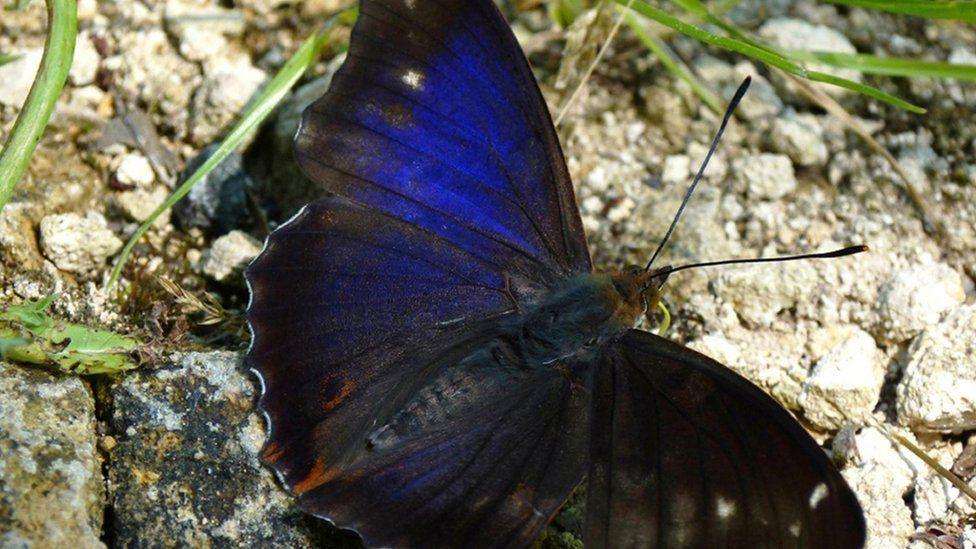'Shocking' drop in butterfly numbers - charity

Red admiral butterflies are one of many species that have been visiting local gardens less frequently
- Published
Butterfly numbers have dropped significantly this summer, a study suggests.
During June and July, the charity Butterfly Conservation counted the numbers of the insects at Yorkshire Wildlife Trust reserves.
Co-ordinator Nick Hall said the results were "shocking", with early data showing butterfly "abundance" down to less than half of the levels for the same period in 2023.
In June and July 2023, 13,007 butterflies were spotted at 12 sites across Yorkshire - this year only 6,078 were counted at the same locations.
'Hopefully a blip'
Mr Hall added: "Frighteningly, three-quarters of our species are down more than two-thirds, and a third are down 90%."
He said some species, including the holly blue, small copper, common blue and brown argus, were not sighted at all.
Dr Dan Hoare, director of conservation at Butterfly Conservation, said butterflies need "warm and dry conditions to be able to fly around and mate", so 2024's "very dreary spring and early summer" had left the insects with "fewer opportunities to breed, and the lack of butterflies this year is likely the knock-on effect".
However, there was good news for some species.
"The exception to this trend was the peacock butterfly, which suffered in the previous year's heat but has started to recover this year," Mr Hall said. "The damp-loving ringlet also bucked the trend."
The conservationist said there was a long-term trend, which suggested 2024's low numbers were "hopefully a blip".

Mr Hall said since 2019 the silver-washed fritillary has become a common sight in larger woodlands
Mr Hall said, since the 1980s, each decade had been warmer, with the past 10 years including two of the hottest summers. As a result, he said, "most butterflies have increased in abundance".
During 2021, 8,397 butterflies were counted during June and July, and in 2022 the total number was 10,097.
The conservationist added if temperatures continued to rise, "we can hopefully expect 2024 to be a blip and Yorkshire to continue seeing species expanding their range northwards into our region and increasing their abundance".
Mr Hall said new species were arriving in Yorkshire "at a rate of one every four years, as they have for the last 40 years".
One such species was the silver-washed fritillary, he said.
'A warning sign'
However, Dr Hoare added the lack of butterflies this summer was also "a warning sign to us all".
He said butterflies were "a key indicator species and when they are in trouble we know the wider environment is in trouble too".
Follow BBC East Yorkshire on Facebook, external, X (formerly Twitter), external and Instagram, external. Send your story ideas to eastyorkslincs.news@bbc.co.uk, external
Related topics
- Published23 July 2024

- Published12 July 2024

- Published9 November 2023
